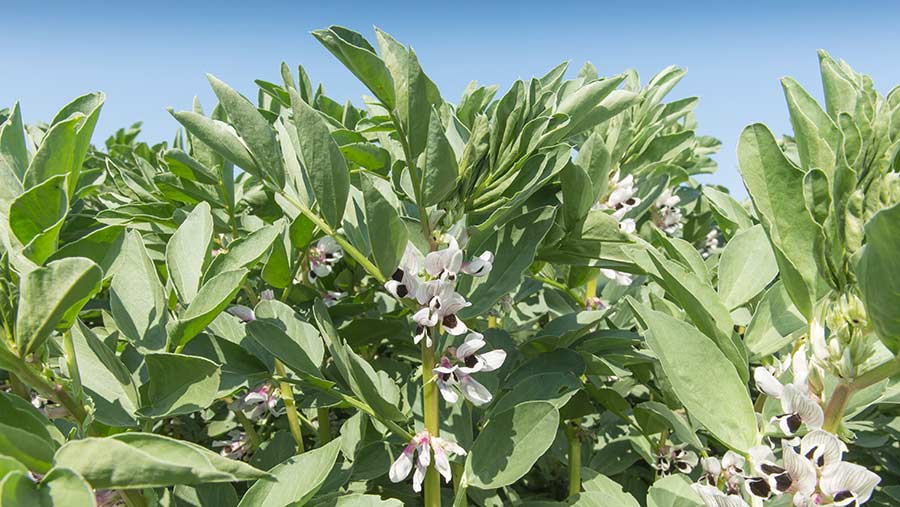New biological product increases nitrogen fixing in beans
 © Tim Scrivener
© Tim Scrivener Bean growers can boost the crops’ nitrogen fixation capability with a new product that captures atmospheric N and converts it into a form that can be utilised by plants.
Vixeran, a new endophytic bacteria from Syngenta, has been proven to kickstart the bean crops’ natural fertility cycle at an early stage.
See also: How starter fertiliser can raise pulse yields by 17%
Although beans are often referred to as “nitrogen fixers”, it is not the plants themselves that do anything, but the microscopic soil rhizobium bacteria that they host on roots, says the company.
The plants’ root nodules are agglomerations of huge numbers of those bacteria built up over the season.
Syngenta technical manager Simon Jackson highlights that where the natural rhizobium bacteria can be supplemented at an early stage with the endophytic bacteria, azotobacter salinestris, the process can be more efficient and productive.
“We have seen some outstanding results with applications of Vixeran on beans. There is a clear yield benefit in trials from supplementing the crops’ natural processes.
“A bean plants’ nodules that contain the nitrogen-fixing rhizobium will be formed on the roots three to five weeks after emergence and straight away start to fix nitrogen.
“However, the nodules will gradually senesce and stop fixing nitrogen around the time of pod filling.”
Since pulse seeds are a great source protein, this is exactly when the demand for nitrogen is at its highest, which means the plant will rob the required nitrogen from the leaves, sapping the plant of its photosynthetic yield building potential.
The addition of the product complements the plants’ nitrogen-need for structural growth, while also reducing the burden on the leaves to supply the nitrogen needed to fill the seeds in the pod.
“This allows the leaves to stay greener and continue photosynthesising for longer, that in turn increases yield,” he explains.
Importantly, the bacteria are capable of converting the atmospheric nitrogen to its plant available form (NH3) in the leaves, roots and soil surrounding the plant.
By going straight into the plant, the N is not leached or volatilised, which is highly efficient and avoids environmental losses from soil, he explains.
Applying the product during periods of active crop growth, trial results in 2023 have shown, on average, a 0.53t/ha improvement in yield.
Assessments on a treated crop showed a 12% uplift in pod numbers, along with a corresponding 12% increase in seed weight in each of the pods.
Simon advises that the product should be applied in spring when beans are actively growing, at a rate of 50g/ha after the six-leaf stage (GS16), through to the start of flowering.
A single application is required to inoculate the crop with the beneficial endophyte.
The product works across a wide range of crops and includes recommendations for use on cereals, maize, potatoes, grassland, and now beans.
Grower can hear more at the PGRO Pulse Roadshows 2024, to be held in York, Bury St Edmunds, and Peterborough during January.

